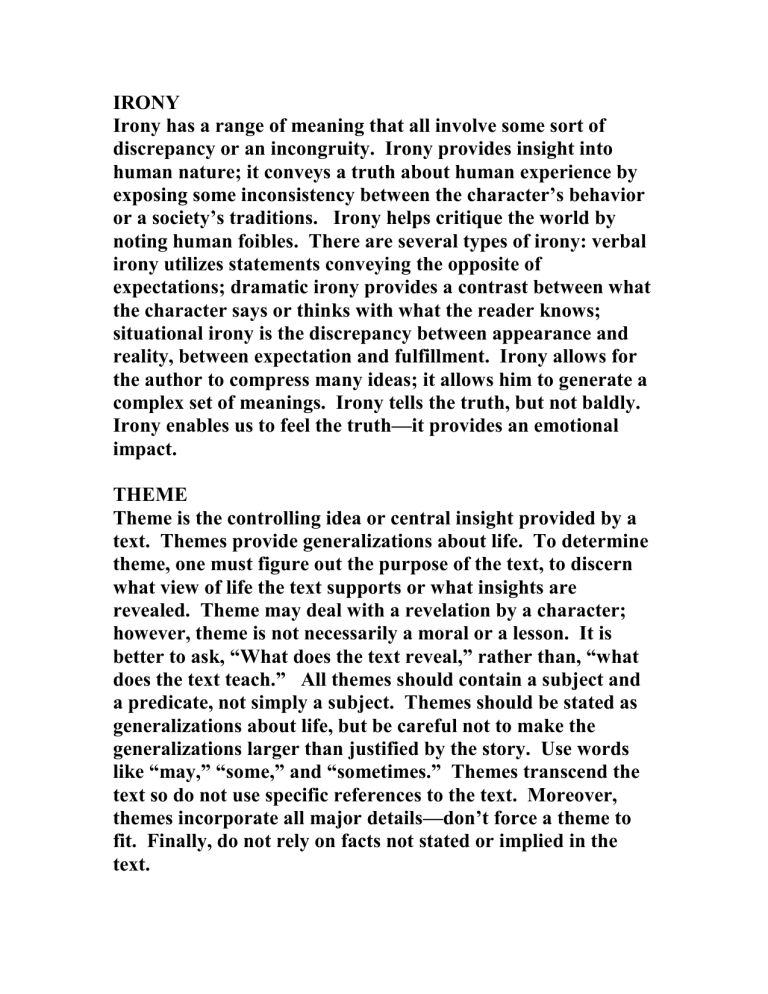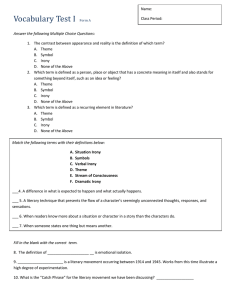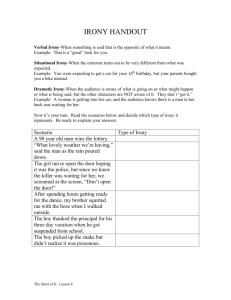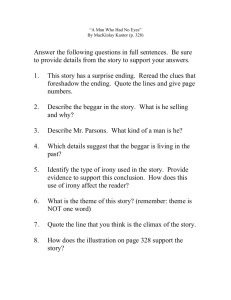IRONY Irony has a range of meaning that all involve some... discrepancy or an incongruity. Irony provides insight into

IRONY
Irony has a range of meaning that all involve some sort of discrepancy or an incongruity. Irony provides insight into human nature; it conveys a truth about human experience by exposing some inconsistency between the character’s behavior or a society’s traditions. Irony helps critique the world by noting human foibles. There are several types of irony: verbal irony utilizes statements conveying the opposite of expectations; dramatic irony provides a contrast between what the character says or thinks with what the reader knows; situational irony is the discrepancy between appearance and reality, between expectation and fulfillment. Irony allows for the author to compress many ideas; it allows him to generate a complex set of meanings. Irony tells the truth, but not baldly.
Irony enables us to feel the truth—it provides an emotional impact.
THEME
Theme is the controlling idea or central insight provided by a text. Themes provide generalizations about life. To determine theme, one must figure out the purpose of the text, to discern what view of life the text supports or what insights are revealed. Theme may deal with a revelation by a character; however, theme is not necessarily a moral or a lesson. It is better to ask, “What does the text reveal,” rather than, “what does the text teach.” All themes should contain a subject and a predicate, not simply a subject. Themes should be stated as generalizations about life, but be careful not to make the generalizations larger than justified by the story. Use words like “may,” “some,” and “sometimes.” Themes transcend the text so do not use specific references to the text. Moreover, themes incorporate all major details—don’t force a theme to fit. Finally, do not rely on facts not stated or implied in the text.



